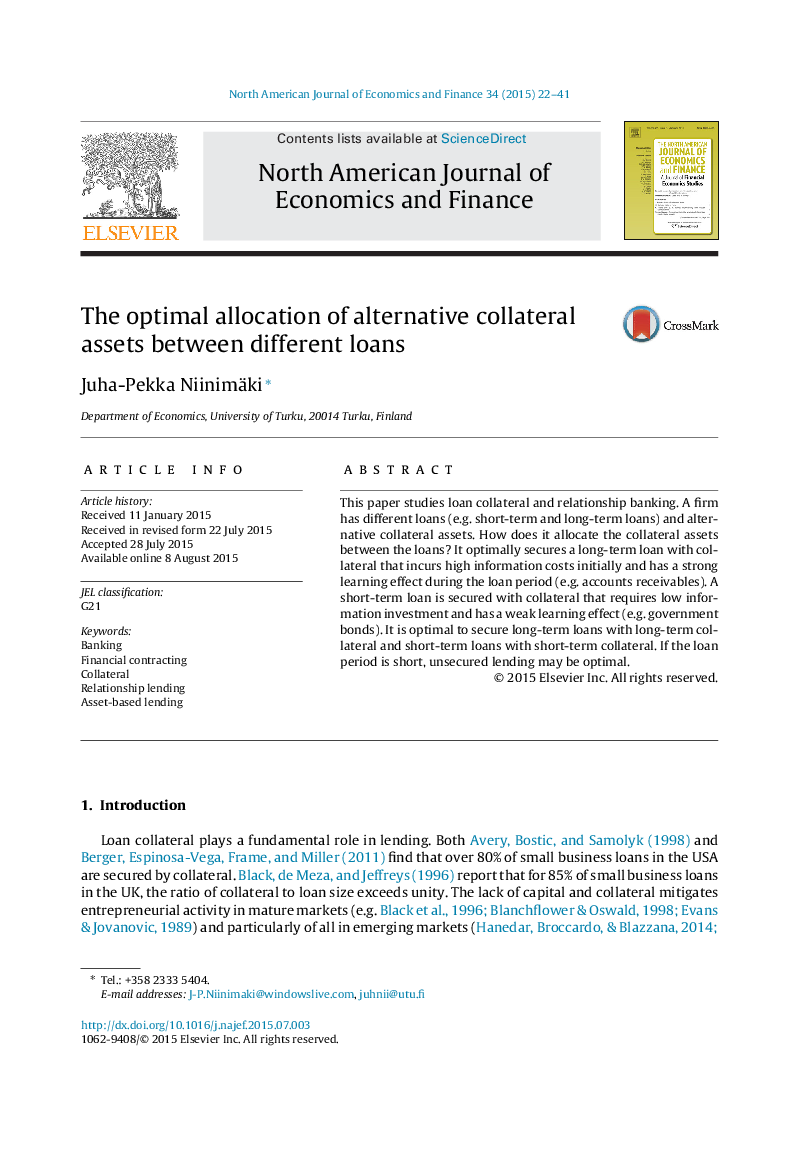| Article ID | Journal | Published Year | Pages | File Type |
|---|---|---|---|---|
| 972592 | The North American Journal of Economics and Finance | 2015 | 20 Pages |
•This theoretical paper examines the optimal allocation of collateral.•A borrower secures a long-term loan with collateral that incurs high information costs and has a strong learning effect.•A short-term loan has collateral that requires a small information investment.•The maturity of a loan ought to match the maturity of the collateral asset.
This paper studies loan collateral and relationship banking. A firm has different loans (e.g. short-term and long-term loans) and alternative collateral assets. How does it allocate the collateral assets between the loans? It optimally secures a long-term loan with collateral that incurs high information costs initially and has a strong learning effect during the loan period (e.g. accounts receivables). A short-term loan is secured with collateral that requires low information investment and has a weak learning effect (e.g. government bonds). It is optimal to secure long-term loans with long-term collateral and short-term loans with short-term collateral. If the loan period is short, unsecured lending may be optimal.
